Hamed Rahimi
I-FailSense: Towards General Robotic Failure Detection with Vision-Language Models
Sep 19, 2025Abstract:Language-conditioned robotic manipulation in open-world settings requires not only accurate task execution but also the ability to detect failures for robust deployment in real-world environments. Although recent advances in vision-language models (VLMs) have significantly improved the spatial reasoning and task-planning capabilities of robots, they remain limited in their ability to recognize their own failures. In particular, a critical yet underexplored challenge lies in detecting semantic misalignment errors, where the robot executes a task that is semantically meaningful but inconsistent with the given instruction. To address this, we propose a method for building datasets targeting Semantic Misalignment Failures detection, from existing language-conditioned manipulation datasets. We also present I-FailSense, an open-source VLM framework with grounded arbitration designed specifically for failure detection. Our approach relies on post-training a base VLM, followed by training lightweight classification heads, called FS blocks, attached to different internal layers of the VLM and whose predictions are aggregated using an ensembling mechanism. Experiments show that I-FailSense outperforms state-of-the-art VLMs, both comparable in size and larger, in detecting semantic misalignment errors. Notably, despite being trained only on semantic misalignment detection, I-FailSense generalizes to broader robotic failure categories and effectively transfers to other simulation environments and real-world with zero-shot or minimal post-training. The datasets and models are publicly released on HuggingFace (Webpage: https://clemgris.github.io/I-FailSense/).
Proceedings of 1st Workshop on Advancing Artificial Intelligence through Theory of Mind
Apr 28, 2025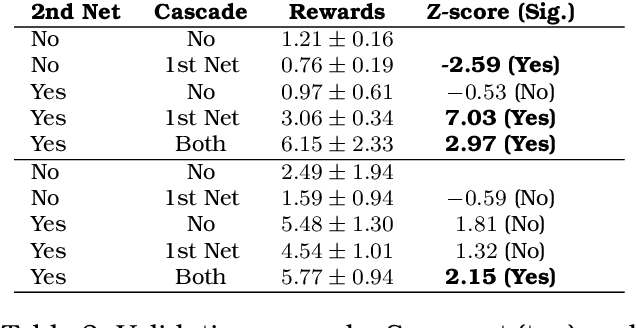


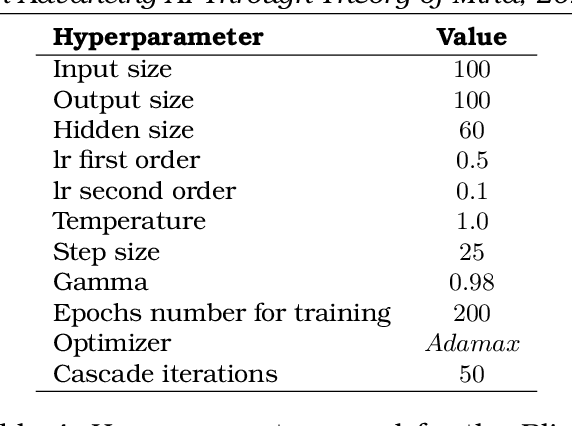
Abstract:This volume includes a selection of papers presented at the Workshop on Advancing Artificial Intelligence through Theory of Mind held at AAAI 2025 in Philadelphia US on 3rd March 2025. The purpose of this volume is to provide an open access and curated anthology for the ToM and AI research community.
Gauging Overprecision in LLMs: An Empirical Study
Apr 16, 2025

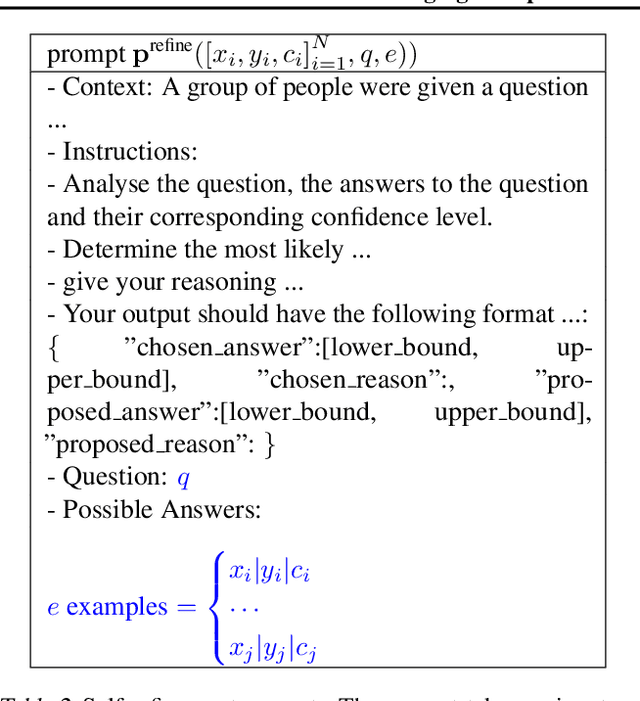

Abstract:Recently, overconfidence in large language models (LLMs) has garnered considerable attention due to its fundamental importance in quantifying the trustworthiness of LLM generation. However, existing approaches prompt the \textit{black box LLMs} to produce their confidence (\textit{verbalized confidence}), which can be subject to many biases and hallucinations. Inspired by a different aspect of overconfidence in cognitive science called \textit{overprecision}, we designed a framework for its study in black box LLMs. This framework contains three main phases: 1) generation, 2) refinement and 3) evaluation. In the generation phase we prompt the LLM to generate answers to numerical questions in the form of intervals with a certain level of confidence. This confidence level is imposed in the prompt and not required for the LLM to generate as in previous approaches. We use various prompting techniques and use the same prompt multiple times to gauge the effects of randomness in the generation process. In the refinement phase, answers from the previous phase are refined to generate better answers. The LLM answers are evaluated and studied in the evaluation phase to understand its internal workings. This study allowed us to gain various insights into LLM overprecision: 1) LLMs are highly uncalibrated for numerical tasks 2) {\color{blue}there is no correlation between the length of the interval and the imposed confidence level, which can be symptomatic of a a) lack of understanding of the concept of confidence or b) inability to adjust self-confidence by following instructions}, {\color{blue}3)} LLM numerical precision differs depending on the task, scale of answer and prompting technique {\color{blue}4) Refinement of answers doesn't improve precision in most cases}. We believe this study offers new perspectives on LLM overconfidence and serves as a strong baseline for overprecision in LLMs.
Reasoning LLMs for User-Aware Multimodal Conversational Agents
Apr 02, 2025Abstract:Personalization in social robotics is critical for fostering effective human-robot interactions, yet systems often face the cold start problem, where initial user preferences or characteristics are unavailable. This paper proposes a novel framework called USER-LLM R1 for a user-aware conversational agent that addresses this challenge through dynamic user profiling and model initiation. Our approach integrates chain-of-thought (CoT) reasoning models to iteratively infer user preferences and vision-language models (VLMs) to initialize user profiles from multimodal inputs, enabling personalized interactions from the first encounter. Leveraging a Retrieval-Augmented Generation (RAG) architecture, the system dynamically refines user representations within an inherent CoT process, ensuring contextually relevant and adaptive responses. Evaluations on the ElderlyTech-VQA Bench demonstrate significant improvements in ROUGE-1 (+23.2%), ROUGE-2 (+0.6%), and ROUGE-L (+8%) F1 scores over state-of-the-art baselines, with ablation studies underscoring the impact of reasoning model size on performance. Human evaluations further validate the framework's efficacy, particularly for elderly users, where tailored responses enhance engagement and trust. Ethical considerations, including privacy preservation and bias mitigation, are rigorously discussed and addressed to ensure responsible deployment.
ATEM: A Topic Evolution Model for the Detection of Emerging Topics in Scientific Archives
Jun 04, 2023
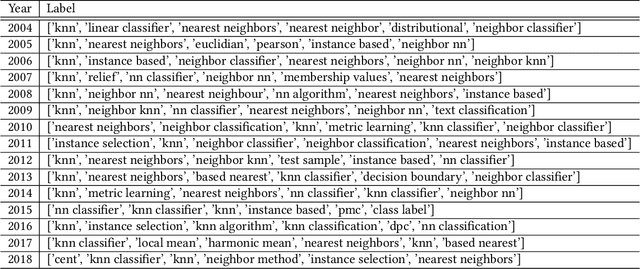
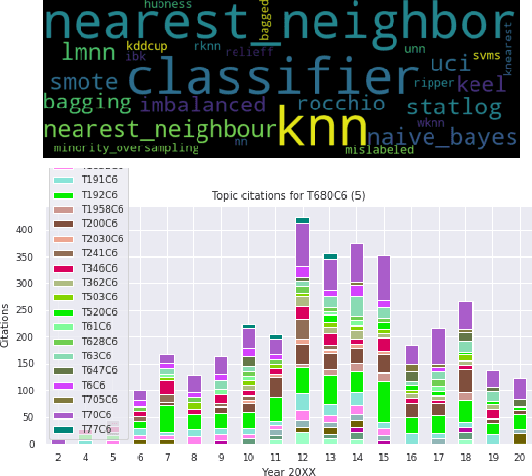

Abstract:This paper presents ATEM, a novel framework for studying topic evolution in scientific archives. ATEM is based on dynamic topic modeling and dynamic graph embedding techniques that explore the dynamics of content and citations of documents within a scientific corpus. ATEM explores a new notion of contextual emergence for the discovery of emerging interdisciplinary research topics based on the dynamics of citation links in topic clusters. Our experiments show that ATEM can efficiently detect emerging cross-disciplinary topics within the DBLP archive of over five million computer science articles.
Contextualized Topic Coherence Metrics
May 23, 2023Abstract:The recent explosion in work on neural topic modeling has been criticized for optimizing automated topic evaluation metrics at the expense of actual meaningful topic identification. But human annotation remains expensive and time-consuming. We propose LLM-based methods inspired by standard human topic evaluations, in a family of metrics called Contextualized Topic Coherence (CTC). We evaluate both a fully automated version as well as a semi-automated CTC that allows human-centered evaluation of coherence while maintaining the efficiency of automated methods. We evaluate CTC relative to five other metrics on six topic models and find that it outperforms automated topic coherence methods, works well on short documents, and is not susceptible to meaningless but high-scoring topics.
ANTM: An Aligned Neural Topic Model for Exploring Evolving Topics
Feb 03, 2023



Abstract:As the amount of text data generated by humans and machines increases, the necessity of understanding large corpora and finding a way to extract insights from them is becoming more crucial than ever. Dynamic topic models are effective methods that primarily focus on studying the evolution of topics present in a collection of documents. These models are widely used for understanding trends, exploring public opinion in social networks, or tracking research progress and discoveries in scientific archives. Since topics are defined as clusters of semantically similar documents, it is necessary to observe the changes in the content or themes of these clusters in order to understand how topics evolve as new knowledge is discovered over time. In this paper, we introduce the Aligned Neural Topic Model (ANTM), a dynamic neural topic model that uses document embeddings to compute clusters of semantically similar documents at different periods and to align document clusters to represent their evolution. This alignment procedure preserves the temporal similarity of document clusters over time and captures the semantic change of words characterized by their context within different periods. Experiments on four different datasets show that ANTM outperforms probabilistic dynamic topic models (e.g. DTM, DETM) and significantly improves topic coherence and diversity over other existing dynamic neural topic models (e.g. BERTopic).
Q-SMASH: Q-Learning-based Self-Adaptation of Human-Centered Internet of Things
Jul 13, 2021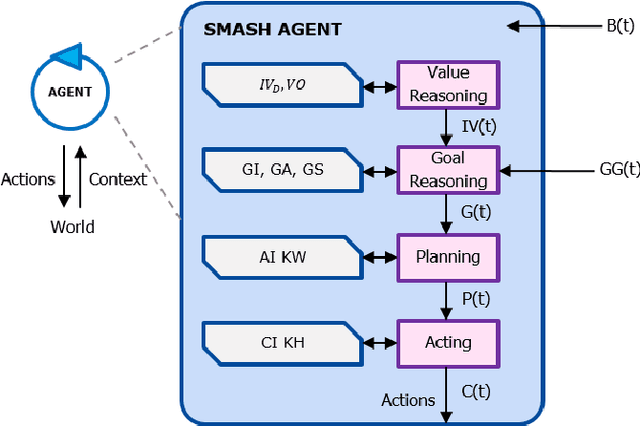
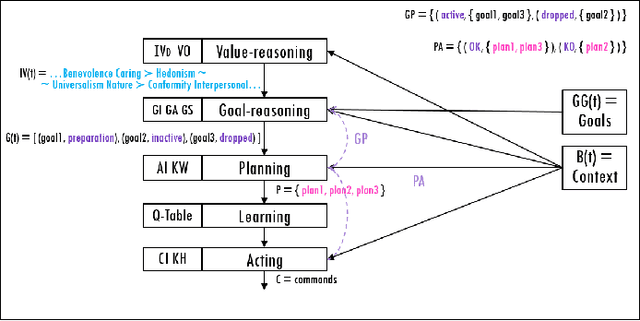
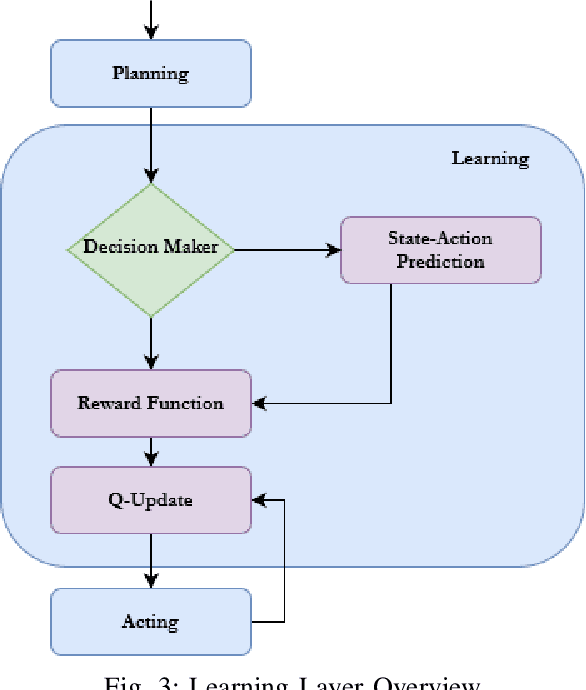
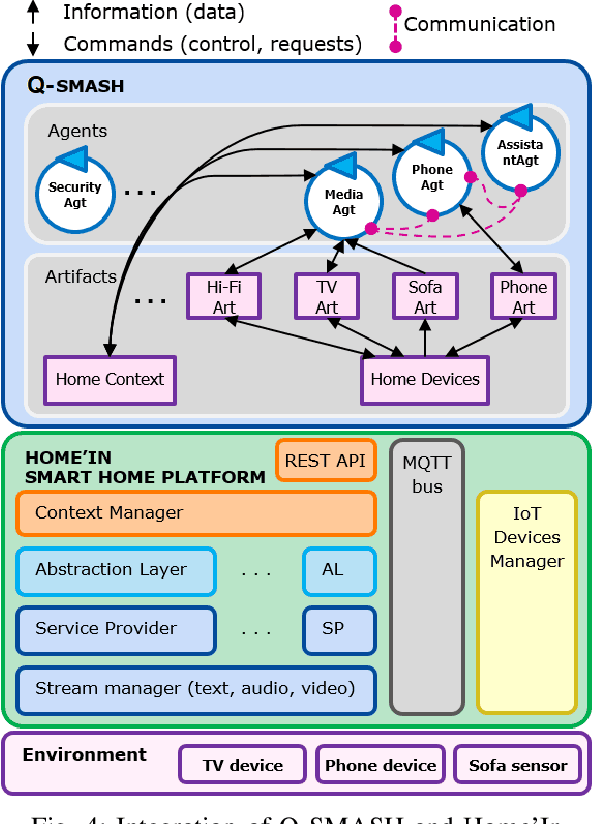
Abstract:As the number of Human-Centered Internet of Things (HCIoT) applications increases, the self-adaptation of its services and devices is becoming a fundamental requirement for addressing the uncertainties of the environment in decision-making processes. Self-adaptation of HCIoT aims to manage run-time changes in a dynamic environment and to adjust the functionality of IoT objects in order to achieve desired goals during execution. SMASH is a semantic-enabled multi-agent system for self-adaptation of HCIoT that autonomously adapts IoT objects to uncertainties of their environment. SMASH addresses the self-adaptation of IoT applications only according to the human values of users, while the behavior of users is not addressed. This article presents Q-SMASH: a multi-agent reinforcement learning-based approach for self-adaptation of IoT objects in human-centered environments. Q-SMASH aims to learn the behaviors of users along with respecting human values. The learning ability of Q-SMASH allows it to adapt itself to the behavioral change of users and make more accurate decisions in different states and situations.
SMASH: a Semantic-enabled Multi-agent Approach for Self-adaptation of Human-centered IoT
May 31, 2021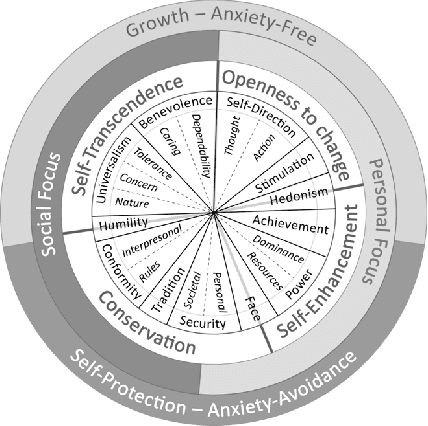

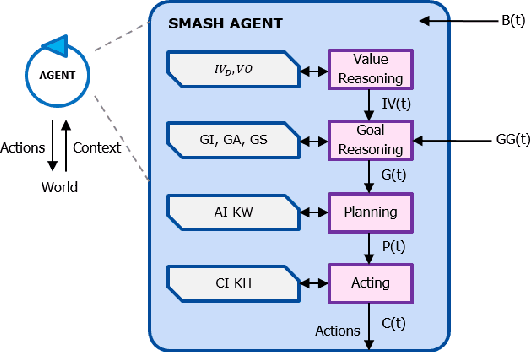

Abstract:Nowadays, IoT devices have an enlarging scope of activities spanning from sensing, computing to acting and even more, learning, reasoning and planning. As the number of IoT applications increases, these objects are becoming more and more ubiquitous. Therefore, they need to adapt their functionality in response to the uncertainties of their environment to achieve their goals. In Human-centered IoT, objects and devices have direct interactions with human beings and have access to online contextual information. Self-adaptation of such applications is a crucial subject that needs to be addressed in a way that respects human goals and human values. Hence, IoT applications must be equipped with self-adaptation techniques to manage their run-time uncertainties locally or in cooperation with each other. This paper presents SMASH: a multi-agent approach for self-adaptation of IoT applications in human-centered environments. In this paper, we have considered the Smart Home as the case study of smart environments. SMASH agents are provided with a 4-layer architecture based on the BDI agent model that integrates human values with goal-reasoning, planning, and acting. It also takes advantage of a semantic-enabled platform called Home'In to address interoperability issues among non-identical agents and devices with heterogeneous protocols and data formats. This approach is compared with the literature and is validated by developing a scenario as the proof of concept. The timely responses of SMASH agents show the feasibility of the proposed approach in human-centered environments.
Road Quality Analysis Based on Cognitive Internet of Vehicles (CIoV)
Apr 16, 2020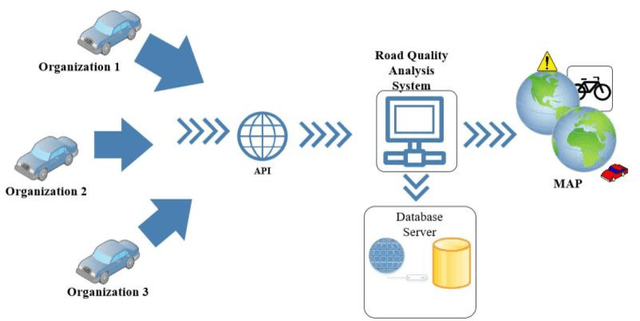
Abstract:This research proposal aims to use cognitive methods to analyze the quality of roads based on the new proposed technology called Cognitive Internet of Vehicles (CIoV). By using Big Data corresponding to the collected data of autonomous vehicles, we can apply cognitive analytics to a huge amount of transportation data. This process can help us to create valuable information such as road quality from an immense volume of meaningless data. In this proposal, we are going to focus on the quality of roads for various business and commercial purposes. The proposed system can be used as an additional service of autonomous car companies or as a mobile application for ordinary usages. As a result, this system can reduce the usage of resources such as energy consumption of autonomous vehicles. Moreover, this technology benefits the next-generation of self-driving applications to improve their QoS.
 Add to Chrome
Add to Chrome Add to Firefox
Add to Firefox Add to Edge
Add to Edge